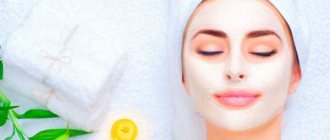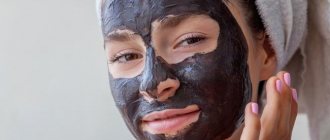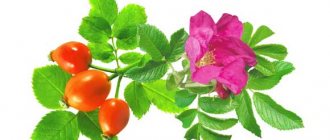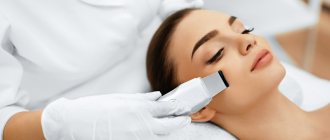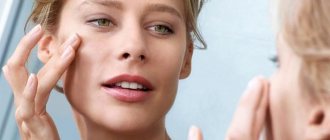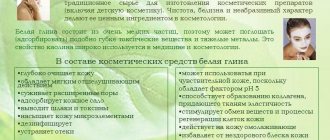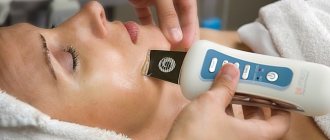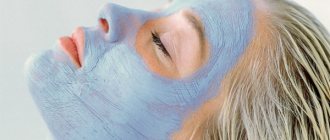Home / For the eyes
Back
Published: 06/04/2020
0
6
- 1 Basic properties
- 2 Description
- 3 How to use chlorhexidine for acne
- 4 Contraindications
- 5 Benefits of chlorhexidine for the face
- 6 Release form
- 7 How to use?
- 8 Other uses
- 9 Side effects
- 10 Acne masks with Chlorhexidine
- 11 Advantages and disadvantages
- 12 Miramistin, hydrogen peroxide or Chlorhexidine – what to choose?
Basic properties
The drug is an antiseptic. It has a pronounced antimicrobial and bactericidal effect. The result will depend on the concentration.
- 0.01% is recommended for the control of gram-positive and gram-negative microbes.
- 0.05% also has a detrimental effect on viruses.
With regular use, you can achieve an antifungal effect. However, it is impossible to treat mycoses in this way, since it will not be possible to completely get rid of the disease. For this, it is recommended to use specially designed medications.
The antiseptic penetrates deeply into the skin. And it already has its antiseptic effect here. You should only use the drug no more than 2 times a day, as the effect will be long-lasting and lasting each time.
Acne treatment does not cause any side effects such as redness, peeling or an allergic reaction.
Chlorhexidine for facial acne is available in several dosage forms. This is a popular solution and can be purchased at any pharmacy. Other forms of release include:
- A gel that also contains lidocaine.
- Cream.
- Spray.
- Candles.
- Bactericidal patch.
The main active ingredient in all cases is chlorhexidine bigluconate. The concentration of the active substance varies widely, but only the one marked 0.01% is used to treat acne.
Chlorhexidine bigluconate - use for acne
Chlorhexidine for facial acne can be used in different dosage forms:
- solution (at a concentration of 0.01%);
- gel;
- spray;
- cream;
- candles;
- bactericidal patch.
In all these forms, the main active ingredient is chlorhexidine bigluconate. When using Chlorhexidine solution, the following features should be taken into account:
- The solution partially loses its bactericidal properties if used simultaneously with hard water, so you should wash your face with soft water before applying the solution.
- Cleaning the face before using Chlorhexidine is done without cleansers.
- Before use, the solution must be slightly warmed.
- You should not use Chlorhexidine before going outside: it increases sensitivity to sunlight.
- Chlorhexidine should not be combined with other antiseptics.
Treatment of acne with Chlorhexidine
Chlorhexidine for acne is used in this way:
- Twice a day, spot treat the inflamed areas of the skin using a cotton swab soaked in Chlorhexidine. After 10 minutes, Levomekol, Skinoren or Salicylic ointment is applied to the inflammation.
- You can wipe your face with Chlorhexidine twice a day for severe rashes. 10 minutes after rubbing, anti-inflammatory ointments are applied pointwise.
- If you had to squeeze out a pimple, you should immediately treat the wound with Chlorhexidine solution.
- Once a day, applications with Chlorhexidine can be applied to the area of skin with a pimple. The napkin with the drug is kept on the abscess for 10 minutes, after which the pimple is lubricated with Levomekol.
Chlorhexidine as a facial toner
Chlorhexidine digluconate is an effective remedy for the complex treatment of acne. It acts as an antiseptic and antibacterial agent: cleanses the skin, relieves inflammation, fights infection, but is it possible to wipe your face with Chlorhexidine for acne every day? Dermatologists and cosmetologists do not recommend using Chlorhexidine instead of a facial toner, because it is a medicinal product and has a number of side effects:
- the drug dries the skin, so it is better to use it spot-on and for no more than two weeks;
- the drug negatively affects the pathogenic flora, but at the same time kills the microflora necessary for the body.
Description
Most often on pharmacy counters you can find an antiseptic solution with a concentration of chlorhexidine bigluconate of 0.05%. For medical needs, the product is produced with a different dosage of the active component - up to 20%.
Chlorhexidine is also available in lesser-known varieties:
- Candles;
- Bactericidal patch;
- Gel containing the anesthetic lidocaine;
- Spray;
- Cream.
To get rid of cosmetic defects, you will need Chlorhexidine with a minimum content of the active substance. Additional components – highly purified water. In appearance it is a colorless, odorless and tasteless liquid.
Chlorhexidine inhibits the activity of the following microorganisms:
- Some varieties of gram-positive and gram-negative bacteria;
- Agents of tuberculosis;
- Dermatophytes;
- Mushrooms of the genus Candida;
- Pathogens of hospital infections;
- Viruses that cause respiratory diseases, gastroenteritis, herpes, influenza, HIV, hepatitis.
Main indications:
- Hand treatment for surgeons and medical personnel;
- Disinfection of the surgical field;
- Disinfection of the injection site and donor skin;
- Cleaning medical instruments and products during periods of active bacterial, viral and fungal infections;
- Antiseptic treatment of the hands of medical workers at social enterprises;
- Hand hygiene for employees of the food industry and catering establishments.
Chlorhexidine is a water-based antibacterial agent that is actively used to sterilize surgical and cosmetic instruments. This substance is a widely used antiseptic.
It is characteristic that the substance is equally effective against both gram-negative and gram-positive bacteria. It is important that during the treatment process, harmful microbes do not develop resistance to this remedy.
The drug is especially active when the temperature rises, but when heated to 100 degrees Celsius, the substance partially decomposes. The main advantage of the antiseptic is that it effectively affects purulent neoplasms. Moreover, it affects the skin for a long time.
Description and composition
Chlorhexidine is a solution for external use in the form of a colorless or light yellow, transparent liquid with a characteristic odor.
Antiseptic with bactericidal action, which is effective against:
- gram-positive and gram-negative bacteria;
- protozoa;
- viruses;
- and mushrooms.
The active ingredient is chlorhexidine bigluconate. After treatment, it remains on the skin in the amount necessary to exhibit a bactericidal effect.
Chlorhexidine has been used as a topical antiseptic for several decades.
This product is available in two forms:
- Alcohol based . Mainly used for disinfection of medical instruments, hands and surface treatment.
- Water-based . Used in various fields of medicine for washing wounds, gargling sore throats, treating skin and mucous membranes.
Attention! Before using Chlorhexidine, you should consult a dermatologist to determine the concentration of the solution for treating the skin.
How to use chlorhexidine for acne
To get rid of acne and inflammation, it is recommended to use a Chlorhexidine solution with a concentration of 0.05 to 0.5%. You can apply the product in several ways:
- pointwise using a cotton swab;
- in the form of lotions made from cotton pads soaked in a solution, which are applied to areas covered with acne or places where acne has been squeezed out.
Individual large acne can be spot-treated with Chlorhexidine, and after a few minutes, lubricated with salicylic ointment. It is advisable to carry out the procedures in the morning and evening for several weeks.
Is it possible to apply chlorhexidine to acne? This can be done, but only if you follow the rules.
The medicine should not be used together with hard water, as this will cause the loss of healing properties. This means that during treatment it is recommended to use only boiled or distilled water.
To enhance its bactericidal effect, the solution must be slightly warmed. But not to a boil, but so that its temperature rises slightly higher than room temperature.
Can I wipe my skin with this acne medicine in summer? This is not recommended, especially if you spend a long time in the sun. If the recommendations are not followed, the drug may cause a strong photosensitivity reaction, which can cause severe sunburn.
When treating acne, you should not use other antiseptics, such as iodine, hydrogen peroxide or miramistin.
Preparation of the composition for the procedure
Home peeling, which contains Chlorhexidine, is effective for problematic and oily skin. Not all clay is suitable for the procedure!
On the packaging, the manufacturer usually indicates what type of skin this type of clay is suitable for.
The drug "Chlorhexidine" is alcohol-based and water-based. For the procedure, a water-based product with a concentration of 0.01% is used.
Peeling should be applied immediately after its preparation, since the clay begins to harden a few minutes after dilution.
Proportions for preparing homemade clay peeling with Chlorhexidine:
| Name | Quantity |
| Cosmetic clay | 2 -3 tbsp. l. |
| "Chlorhexidine" water-based | 2 tsp. |
| Water | To dilute to the desired consistency. |
Instructions:
- In a non-metallic container, dilute the required amount of clay with water, as indicated on the package.
- Add Chlorhexidine to the resulting mass.
- Mix the composition thoroughly.
Contraindications
Although the drug is capable of destroying most bacteria, it is less effective in the fight against viruses and can only have an effect in high concentrations (from 0.5%). Fighting fungal infections on the skin with Chlorhexidine is completely pointless.
The drug should not be used to treat skin:
- women during pregnancy and lactation;
- children under 12 years old;
- people with dry skin and allergic skin rashes.
There is no point in using Chlorhexidine for any rash that is not caused by bacteria. Long-term use of the drug increases the skin's sensitivity to ultraviolet radiation, so it is necessary to use a product with a high SPF factor as a day cream. Finally, an allergy to Chlorhexidine is also possible, so you should use the product with caution the first time.
The use of chlorhexidine is advisable in the following cases:
- Skin diseases of infectious nature.
- Prevention of infectious skin diseases.
- Single pimples.
- Acne disease.
- Treatment of infected wounds.
- Treatment of scratches, abrasions and other minor skin damage.
- Hand disinfection.
- Sterilization of medical instruments.
The medicine has proven itself well in cosmetology as a remedy that helps quickly get rid of redness and inflammation of the skin due to acne.
We invite you to familiarize yourself with How to remove a mole at home: methods, precautions, folk remedies, photos and videos
According to the instructions, chlorhexidine cannot be used for:
- Dermatitis.
- Hypersensitivity to the drug.
- Allergic reaction.
- Pregnancy.
- Breastfeeding.
- Children under 12 years of age.
- Dry or sensitive skin.
If you have any doubts about the possibility of using chlorhexidine bigluconate in the treatment of acne, be sure to consult your doctor. Self-medication in this case is unacceptable.
The use of chlorgesidine for acne on the face before and after
Antiseptic has a wide range of applications:
- treatment of cuts and wounds;
- acne;
- acne;
- prevention of sexually transmitted diseases;
- treatment of various oral diseases;
- Chlorhexidine is used to treat medical instruments and dentures.
The product is also often used to disinfect the surgical field and the surgeon’s hands before surgery.
Moreover, an antiseptic is often used to treat palms by catering workers, cooks, and so on. The antibacterial solution can be used during pregnancy and childhood; there are no contraindications for this, but despite the harmlessness of the product, caution is still recommended.
Despite the safety of this product, Chlorhexidine is still a drug, which means it has a number of specific contraindications that should be taken into account before using the product. Known ones include:
- the presence of dermatitis in the active stage;
- individual sensitivity of the body to the drug;
- dry epidermis;
- the occurrence of allergic reactions to the components of the drug.
Before using a product to treat an inflamed rash, it is important to consult a dermatologist or cosmetologist about this. Only in this case will it be possible to avoid possible negative consequences that could aggravate the patient’s clinical picture. Before use, you must also read the instructions for use.
If various allergic reactions occur after starting to use the product, you should stop treatment and see a doctor.
Benefits of chlorhexidine for the face
If acne appears on the cheeks, forehead, nose or other parts of the body, especially purulent or subcutaneous acne, it is best to consult a dermatologist.
After some diagnostic procedures, the doctor will accurately determine the cause of the rash and prescribe the medications that will help you.
Under no circumstances should ulcers be squeezed out. This can lead to infection of surrounding tissues, as well as to such a serious complication as sepsis. But chlorhexidine acne solution should be used to treat such breakouts.
It is also recommended to carry out this procedure if you still decide to squeeze out the abscess. You must proceed as follows:
- Treat the solution not only to the pimple, but also to the area around it, as well as your hands.
- Take a thin needle from a 2.0 ml syringe. Wipe it with alcohol.
- Make a puncture in the very center of the abscess. Most often it is completely painless.
- Squeeze out the entire contents, carefully remove with a cotton pad, and then wipe the puncture site and the skin around it with 0.01% chlorhexidine.
- Take another cotton pad, moisten it again with an antiseptic solution and again treat the area where the abscess used to be.
Acne should be treated only with a solution with a concentration of 0.01%. However, you cannot use a solution with a concentration of 0.05% to treat acne, as using it can cause skin burns.
If you follow this procedure, you can easily prevent the appearance of redness after squeezing, as well as infection and the spread of inflammation to healthy tissue.
If the pimple has not yet matured, then it is recommended to treat it twice a day - morning and evening. After using the solution, apply acne ointment to the inflamed area. It can be salicylic acid, levomekol, skinoren. The full course of treatment is 2 weeks.
In this case, it is recommended to wipe acne not for therapeutic purposes, but for antiseptic purposes. And only after that apply the main medicinal drug.
The solution can also be used as applications. It's easy to do:
- Soak a cotton pad with the solution.
- Apply to the inflamed area on the face or other part of the body for a couple of minutes, up to a maximum of three.
- Treat the area with any drug prescribed by a dermatologist.
With this procedure you can get rid of redness, swelling and relieve itching. Carry out twice a day for 2 – 5 days.
Chlorhexidine is a solution with a pronounced antiseptic effect. Cosmetologists use it to treat the skin after mechanical cleansing and recommend using it to combat pimples, acne, and acne. Those with dry skin should use this medicine carefully and apply it directly to problem areas. The solution dries the skin, so after using it you must moisturize it with creams.
In cosmetology, an antiseptic is used to cleanse pores, remove dead particles of the epidermis, and fight microorganisms that cause inflammatory processes.
- Disinfection. The active substance Chlorhexidine bigluconate penetrates deep into the pores and maintains its concentration there for a long time. Fighting microbes in the layers of the epidermis, it neutralizes the source of inflammation.
- Reducing redness on the face. Thanks to its bactericidal properties, it relieves inflammation at the site of bacterial development.
- Stimulation of normal functioning of the sebaceous glands. Improves the production of sebaceous secretion and prevents its stagnation in the pores.
- Pore cleansing. The medicine removes dust, fat deposits, and dead cells accumulated in the pores. It has a narrowing effect on them.
- No allergies. The antiseptic is hypoallergenic. The only possible side effects are increased peeling and increased sensitivity to ultraviolet radiation.
- Deep penetration. Molecules of the active substance penetrate into the most distant layers of the epidermis.
Cosmetologists recommend using an antiseptic to wipe the entire surface of the face only if there are multiple pustular rashes. But, as with any other medicine, you should not be overzealous.
The effect of the bactericidal drug is on pathogenic microorganisms and natural microflora. The skin loses its own protective functions and becomes more susceptible to external factors. Therefore, constant wiping with chlorhexidine can lead to new problems. The recommended course of treatment is two weeks.
The use of the drug helps to get rid of problems due to its antibacterial effect. A pimple is an inflammatory process in the epidermis. Spot treatment reduces redness, inflammation and dryness.
Another problem that owners of oily, problematic skin face is blackheads. They are formed due to the accumulation of excess fat mixed with dust, dirt and dead cells in the pores.
- Grind 2 tablets of activated carbon to a powder.
- Mix with crushed acetylsalicylic acid tablets (aspirin).
- Add 2 drops of tea tree oil.
- Make a paste by diluting all ingredients with Chlorhexidine.
- Apply the mask to problem areas of the skin and leave for 10 minutes.
- Rinse with warm water and moisturize with creams.
We invite you to familiarize yourself with what products improve the condition of facial skin.
The effect of the mask is due to the pronounced properties of the constituent components. Activated carbon is a powerful sorbent that removes dirt accumulated there from pores. Acetylsalicylic acid reduces inflammatory processes. Chlorhexidine kills bacteria that cause acne.
It is recommended to follow the exact procedure when wiping your face with an antiseptic. The best method is to use compresses with an antibacterial agent, since this treatment of the affected areas of the skin has the most effective effect, and the pimples begin to dry out and disappear. However, after 10 minutes, you should not only remove the compress from the surface of the skin, but also wash your face under cool water.
Before the wiping procedure, hands and cosmetic instruments must be treated with an alcohol-containing solution. If you need to clear pus from acne vulgaris, you need to use a sterile instrument. Thanks to this, harmful bacteria will not spread to healthy areas of the skin.
It is also necessary to remember that the effective effect of the solution decreases during contact with blood and certain medications.
Release form
You can purchase antiseptic in several forms:
- Solution. Most often used to disinfect surgical instruments and the outer layer of the epidermis, replacing iodine and brilliant green. The solution penetrates deep into the tissue, destroying harmful bacteria located in the pores.
- Suppositories. This type of antiseptic is not used to treat acne vulgaris; it is used to treat gynecological diseases.
- Gel. It is used in the treatment of urological, gynecological and dental pathologies.
How to use?
To effectively get rid of vulgar pimples and acne, it is necessary to carry out regular cleansing procedures using a solution. The most important condition is that the procedures be regular, otherwise it is impossible to achieve positive results.
The procedure for cleansing your face from acne looks like this:
- First, you need to remove all makeup, after which it is recommended to wash your face with warm water. When washing your face, it is best to use gels or tonics. This procedure will help remove all dirt accumulated during the day from the surface of the epidermis; it is also not advisable to use soap when washing so as not to dry out the skin.
- An antiseptic solution is applied to the cotton wool in small quantities.
- Problem areas of the skin are treated with a cotton pad; healthy areas of the skin are also subjected to additional cleaning: forehead, nose, temples, chin, etc.
- After 5-7 minutes, the face must be washed with cold water, during which time the drug neutralizes harmful bacteria that were on the surface of the skin and in the pores of the face.
It is advisable to carry out the above procedure before bedtime, since at this time the process of cell regeneration is activated. In the morning, it is not recommended to use the substance to wipe the face, due to the fact that the drug increases the sensitivity of the epidermis to external irritants and solar radiation, as a result of which irritation may appear on the skin.
Cleansing the epithelium with an antiseptic should be carried out no more than once a day, and at the end of the procedure it is advisable to apply a nourishing moisturizer to the skin.
Can it be used every day and what will happen?
In adolescence, when the skin is not performing well, to prevent the formation of inflammatory processes, you can wipe your face with water-based chlorhexidine, but not more than twice a week. Penetrating deep into the skin, the drug destroys microbes and bacteria that are the source of inflammation.
When used correctly, the product can achieve an excellent antiseptic effect and cleanse the skin as much as possible.
In the video, the cosmetologist explains whether chlorhexidine can be used daily:
Rules of application
- Before treatment, the face must be washed with clean water without soap or other cosmetic substances.
- Apply the product to a cotton pad and wipe your face with gentle movements, avoiding the skin around the eyes.
- After treating the skin, you need to wait 10 minutes.
- Then wash your face with warm water.
- Apply moisturizer.
After drying the facial skin, if necessary, you can apply an ointment to problem areas, which has anti-inflammatory, antibacterial and healing effects. The ointment must be applied pointwise, only to inflamed areas.
Important! It is forbidden to use chlorhexidine after peeling and cleansing the face with cosmetics.
Other uses
An effective remedy against pimples and acne is solution-based lotions. To make a compress, you must adhere to the following sequence:
- facial skin is pre-cleaned with lotions that do not contain alcohol;
- a cotton swab is soaked in antiseptic;
- a disc is applied to the problem area of the skin affected by purulent growths and secured with a band-aid for 10 minutes;
- after 10 minutes, the cotton pad must be removed and the face washed under cold running water;
- Although the drug does not dry out the skin, as doctors say, it is still recommended to moisturize the skin with a nourishing cream after the lotion to avoid peeling.
Before you start wiping your face with this acne remedy, you must remember that it has poor compatibility with many drugs.
This acne treatment method should not be used while taking other medications that contain or may contain carbonates, chlorides, sulfates, borates, phosphates, or citrates.
Also, the effect of the drug is enhanced when used simultaneously with medical alcohol.
With the help of the drug you can remove not only acne, but also the scars left behind. To do this, it is enough to spot treat areas where scars accumulate with a preparation of 0.05% concentration 3 times a day until the scars completely disappear.
Chlorhexidine can be added to masks for skin care with high oil content.
- Blue or green clay can be diluted with Chlorhexidine solution to a semi-liquid state and applied to the face. This product will create an additional peeling effect and remove all toxins from the surface of the skin.
- You can also dry your skin using a mask of 1 tbsp. white clay, 0.5 tbsp. badyagi and a small amount of Chlorhexidine. The mask should be applied to the skin using gentle circular movements and left for 10-15 minutes.
Masks with the addition of essential oils are even more effective at cleansing oily skin. If the skin is highly sensitive, burns are possible, so such masks should not be left on the face for longer than 8-10 minutes. All recipes call for 1 tbsp. cosmetic clay, a couple of drops of each essential oil, and dilute the entire composition with Chlorhexidine to a paste.
Recipes for masks with essential oils
- Yellow clay, Chlorhexidine, tea tree oil.
- Black clay, Chlorhexidine, oils: mint, orange and tea tree.
We invite you to read Everything about facial peeling: what it is, what it is for, what types there are, how to do it at home and other nuances || Peeling for mature skin
Blackhead remover
Grind and mix 2 tablets of activated carbon and aspirin, dilute the mixture with a small amount of Chlorhexidine and add a couple of drops of tea tree oil. The mask should be kept on the face for no longer than 10 minutes. It is better for those with dry skin to avoid the procedure.
Bigluconate in cosmetology
Chlorhexidine bigluconate is used in cosmetology to treat problem skin, namely to eliminate:
- Acne.
- Excessive oily skin.
- Pustular diseases.
- Single papillomas.
The product is also used to prevent the occurrence of new rashes after cosmetic facial cleansing.
Does it help with acne?
Of course, Chlorhexidine is very useful in treating acne. It destroys the causative agent of inflammation (pathogenic microflora), reduces the course of the inflammatory process itself. Due to the fact that this drug inhibits the functioning of the sebaceous glands, the skin does not become covered with oil too quickly, the pores do not become clogged, thereby preventing the formation of new acne.
Considering that the Chlorhexidine solution is not alcoholic, the applied drug will not dry out the skin too much. This is its advantage over other means.
Also, Chlorhexidine is not absorbed into the blood and is therefore harmless.
Application for cleaning
Self-squeezing pimples is essentially mechanical facial cleansing. It doesn’t matter where it is carried out, in a beauty salon or at home, the skin must be disinfected in any case. Chlorhexidine is excellent for these purposes.
The procedure itself goes as follows:
- First, you need to wash your face with water and remove all makeup.
- Wipe dry.
- Treat your hands with Chlorhexidine.
- The skin around the abscess should also be wiped with an antiseptic.
- Gently squeeze out the pimple.
- Cauterize again with the solution.
Be sure to rub healthy skin near the squeezing site as well.
It should be taken into account that Chlorhexidine should not be combined with alkaline anionic compounds. That is, before wiping your face with an antiseptic, your skin should not be treated with soap. This may reduce the effect of the antiseptic.
Wipe for papillomas
Papillomas are a manifestation of a viral disease. If they occur, you must consult a doctor. He will prescribe antiviral therapy and may advise the use of topical Chlorhexidine solution.
It is often recommended to cauterize papillomas with a cotton swab dipped in antiseptic several times a day. This does not cure the formation, but only prevents the development of infectious complications.
The duration of the procedures must be prescribed by a doctor.
Use instead of tonic
If the skin is too oily and problematic, Chlorhexidine can be used as a toner. To do this, use a cotton swab to wipe your face with an antiseptic solution once a day for 2 weeks.
Then you need to take a break so that the skin does not become overly dry.
Antiseptic masks
Face masks containing Chlorhexidine are recommended to eliminate:
- Excessive oily skin.
- Acne rashes.
- Acne scars.
- To reduce active inflammatory process.
The most used additional components are white and black clay.
For acne
The most popular mask recipes for treating acne are:
- You will need 2 tsp. solution of Chlorhexidine and black clay. All ingredients must be mixed until smooth. Completely clean your face of makeup and apply a mask. You need to stay in this state for about 15 minutes, after which the product is washed off with warm water and the face is lubricated with moisturizer.
- You need to take 1 tbsp. l. white clay, ½ tsp. badyagi and 5 drops of Chlorhexidine solution. The ingredients are stirred to form a thick paste. Wash your face and then apply a mask on it for 10-15 minutes until it dries completely. After time, the product is washed off and moisturized with cream.
- You need to take 1.5 tbsp. l. baby powder (it dries and heals the skin perfectly), ½ tbsp. l. Chlorhexidine and mix until a thick paste is obtained. The mask is applied to a previously cleansed face using a cotton pad, evenly distributed to all areas of the skin. The product should harden. Next, you need to either gently knock it off or leave it on your face all night. The next morning, knock off the mask and wash off the residue with warm water. At the end of the procedure, it is necessary to apply a moisturizer to avoid drying out the skin.
Is it possible to lighten your hair?
Chlorhexidine can be used for care and care and treatment. But not the hair itself, but the skin. The product helps to cope with itching, seborrhea and other skin pathologies that cause discomfort. It is used for irrigation, washing and in the form of applications.
Chlorhexidine is often confused with hydrogen peroxide and is thought to have the ability to lighten hair. But the product is not used for this purpose, because it does not have any effect on the condition and color of the hair.
Side effects
Chlorhexidine bigluconate against acne is an absolutely safe remedy. Side effects when using it are rare.
Skin dryness, flaking, itching or irritation are usually present. Dermatitis may also appear. And when used in the summer - increased sensitivity to sunlight.
Therefore, before wiping your face with chlorhexidine, it is recommended to conduct an allergy test. It is done like this: a drop of the drug is applied to the inside of the wrist or elbow, after which the reaction must be monitored throughout the day.
If there is no allergy, no itching or redness, then the solution can also be used to treat acne on the face.
When treating acne, the solution should only be applied pointwise. To do this you need to use a cotton swab. It is not recommended to apply antiseptic to healthy skin.
The principle of action of chlorhexidine
Chlorhexidine is applied externally. It has both an antiseptic and bactericidal effect. The activity of the drug is manifested against most pathogenic microorganisms and prevents the growth and ability of fungal microflora to reproduce.
The concentration of an alcoholic or aqueous solution of chlorhexidine determines what effect it will have on the human body. A solution with a 0.01% concentration has a bacteriostatic and bactericidal effect. This solution effectively helps to destroy bacteria and prevents the spread of pathogenic microflora.
Problem skin causes many problems at any age
The drug with a 0.05% concentration has a fungicidal (antifungal) and virucidal effect, as well as the ability to fight lipophilic viruses.
To cure problem skin, it is advisable to use a solution of chlorhexidine , which penetrates deeply into the tissue and does not have the slightest effect on the skin, but exhibits its therapeutic effect to the fullest.
The effect of chlorhexidine bigluconate is that when the molecules of the active component, which have a positive charge, interact with the cell membranes of bacteria, which have a negative charge, destabilization and damage to the cell walls of microorganisms occurs. As a result, they lose the substances necessary for life and die.
The effect of this medicine not only destroys bacteria, but also removes their waste products from the body.
When used externally, the product comes into contact with proteins located in the upper layers of the epidermis. There is a gradual release of the active components of chlorhexidine with the manifestation of its antimicrobial activity and the preservation of the antiseptic effect for up to 2 days.
Skin lesions in the form of teenage problems can be treated with chlorhexidine
The drug retains its therapeutic properties even when in contact with pus and blood. This is another advantageous advantage of chlorhexidine over other antiseptics.
However, chlorhexidine can also have a negative effect on the condition of the skin in that microorganisms that maintain its protective functions in a stable state also fall under its negative influence. Therefore, first of all, you need to know whether it is possible to wipe your face with chlorhexidine in each specific case individually.
Read the popular article in the category: Black face cleansing mask: how to make it at home
Acne masks with Chlorhexidine
There are a dozen known folk recipes based on this substance. Masks with Chlorhexidine are especially effective against inflamed rashes on the face; consider the most effective recipes:
- With clay. The use of a clay mask is recommended for caring for problematic and oily skin. A tablespoon of black clay is diluted with an antiseptic until creamy. The resulting solution is applied for 15 minutes, and after this time is washed off under running water. It is recommended to repeat the procedure no more than 2 times a week.
- With baby powder. Add a little antibacterial substance to one spoon of baby powder and mix until mushy. If there is no powder, it can be replaced with talcum powder. The resulting substance is applied to the face for 10 minutes. After this time, the powder will dry out, and you can use a sponge to remove it. After this procedure, it is not advisable to wash your face for a couple of hours. After washing, moisturizer is applied to the skin. The mask is applied not only to problem areas of the epidermis, but also to the entire face no more than 2 times a week.
- With essential oils. To prepare, you will need to mix a small amount of black clay with an antibacterial solution and add a few drops of mint or tea tree essential oil to the resulting creamy mixture. The mask is applied for 8 minutes, after the end of time it is washed off under running water. Before using a mask based on essential oil, it is recommended to test for an allergic reaction of the body, and this recipe is best not used for sensitive skin. Use the procedure no more than once a week.
- With aspirin and activated carbon. A very effective method against inflamed tumors and acne, for the preparation of which you will need to crush several aspirin and activated carbon tablets into powder. Mix the resulting powder with an antibacterial agent and add a few drops of mint oil. Apply the creamy mixture for 10 minutes, then rinse off. Apply once every 8 days.
- Peeling mask. This method cannot be used for inflamed rashes, when purulent contents are visible on the tops of pimples. Mix 1 spoon of blue or green clay with 2 spoons of antibacterial substance and mix thoroughly. The semi-liquid mixture is applied using massaging movements of the fingers, and after 7 minutes is washed off with cold water. Use no more than once every 10 days.
Advantages and disadvantages
Already at the first use, chlorhexidine acts on both gram-positive and gram-negative microbes, as well as viruses.
If you use the drug at the very beginning of the development of a pimple, you can stop the development of inflammation.
After the first use, chlorhexidine penetrates deeply into the skin and has a long-lasting antibacterial effect.
When applied externally, the antiseptic is not absorbed into the blood and does not penetrate the internal organs. This allows us to speak about the high safety of the drug.
Chlorhexidine for facial acne increases skin sensitivity to the sun. Therefore, it is not recommended to use this antiseptic in the summer.
With frequent use, you can destroy not only pathogenic, but also beneficial microbes.
If you apply an antiseptic to an open pimple in the presence of pus, its effect will be significantly reduced.
The use of "Chlorhexidine" in cosmetology
Due to its cleansing properties and availability, the drug “Chlorhexidine” is widely known both in cosmetology and in medicine. This is a powerful antiseptic and is used to fight bacteria and viruses.
Interesting fact! Use in cosmetology began when experts determined the beneficial effects on the skin of a combination of components such as clay and Chlorhexedine.
Dermatologists have conducted studies that have confirmed the success of peeling in the treatment of oily and problematic skin prone to inflammation.
Clay removes the stratum corneum and reduces excess fat secretions, and Chlorhexidine, penetrating into the skin, destroys bacteria that cause inflammation.
At the same time, the simplicity of preparing the composition and applying the peeling, with due care of safety, made it possible to use it even at home.
Important to remember! After home peeling using the components “Chlorhexidine” and clay, you need to take extra care of your face. The skin becomes more susceptible to environmental influences.
After the procedure, you must use a cream with SPF protection.
Cosmetologists advise using home peeling from the components “Chlorhexidine” and clay for clients who have problematic and oily skin.
Its bactericidal properties control the activity of the sebaceous glands, help reduce “black spots” on the face and inflammatory processes.
Be careful! Like any antiseptic, Chlorhexidine destroys both pathogenic microflora and beneficial bacteria that are present on our skin in the required volume.
Beneficial bacteria regulate the growth of pathogenic bacteria, destroying their excess. With frequent use, there is a risk of disturbing the microflora of the skin and deteriorating the appearance of the face.
The consequence of drug abuse can also be disruption of the sebaceous glands.
Despite the fact that Chlorhexidine is a drug, it does not penetrate into the bloodstream when applied to the skin. Its use is absolutely safe.
Read the popular article on the site: Comfortable long-term hair removal: Sugaring at home. How to prepare the paste and do sugar hair removal correctly.
Miramistin, hydrogen peroxide or Chlorhexidine – what to choose?
Many argue that Chlorhexidine, Miramistin and hydrogen peroxide are the same antiseptic. This is certainly not true. Chlorhexidine is a domestic antiseptic, for this reason it costs much less than Miramistin.
There are also other differences between these drugs. For example, Chlorhexidine is equally harmful to gram-negative and gram-positive harmful bacteria, certain viruses and yeast. Miramistin has a wider spectrum of action, since in addition to the above, the antiseptic also effectively affects fungal infections and specific strains of viruses.
Regarding Chlorhexidine and hydrogen peroxide, the former is the clear leader in this comparison. The fact is that this substance is cationic due to the transfer of positively charged ions that are in solution. As is known, the bactericidal cell is negatively charged; because of this circumstance, antiseptic cations are attracted to it in greater quantities.
Hydrogen peroxide is most often used to treat external damage to the epidermis: wounds, cuts, etc. Peroxide effectively removes harmful microorganisms from the surface of the dermis, but is not very effective in treating inflamed pimples and blackheads. In this case, preference should be given to Chlorhexidine.
